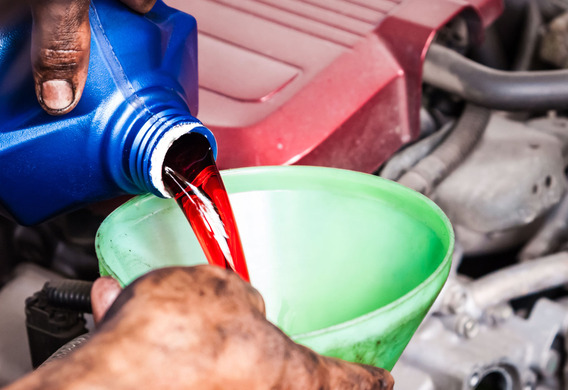
The main task of the application of the transmissive oil is to ensure the protection of the surfaces of the components from eating, wear and tear and other damage by means of the formation on these surfaces of dense oil film. In addition to this transmissive oil, the impact on the gear reduces the vibration and noise of the transmission mechanisms. Often the oil dissipates the excess heat from the contact surfaces. Frictional energy losses are greatly reduced in the mechanisms being lubricated.
In general, transmissive oils are derived from extracts formed by the process of selective cleaning of residual oil oils with additives (anti-protective and anti-tolerable oils) and distilled oils.
Classification of transmissive oil
The range of oils is fairly assortment in vehicle transmission units. GOST 17479.2-85 classifies transmission oils by groups and classes according to operational properties and viscosity. Oil lubricating oils are divided into five groups. All transmission oil has its own symbols. For example, the TM4-10 record stands for: TM-Transmission Oil, 4 indicates the operating group (as indicated above, only five of these groups), and the hyphen specifies the viscosity class (in our case it is 10).
The TM1 group includes summer and winter Nigrol (untreated residues from a direct oil refining race). They are characterized by unsatisfactory antioxidative, anti-oxygenating and low-temperature properties.
The TM2 group consists of oil for steering and transmission to CU, class 18. This kind of oil is quite low in operational properties, so it only applies to some old "lightweight" models.
The TM3 group includes the Tap-15V, TSp-10 and Tsp-15K oil, which are used to lubricant heavy, conical, cylindrical and spiritualized transfers of trucks (Ural, KAMAZ, KrAZ).
TC-4 is composed of oil from TS3-9gep, TSp-14gip and TSgip. The first type of oil is used in trucks in the northern regions where the air temperature reaches 50 °C. Tp-14hyp (Class 18) is used for hipoid gears of trucks in hot and temperate climatic zones. TSgpe is used in old car models with hypoid gears.
The M-5 group includes the oil of the TPM5-12k and TAD-17s. The first oil is universal for the preservation and operation of hypothyroid, spiritus-conical and cylindrical transport of trucks. Used as all-season in regions with cold climate. TAD-17s are used in heavy-loaded hypothyroid, spiral and cylindrical transport of trucks and "lightweight" in hot and temperate climatic zones.
In Western Europe and the United States, two transmission classification systems have been distributed widely: API and SAE J 306. These two systems complement each other and their shared use guarantees the correct selection of transmissive oil.
SAE is based on the definition of oil viscosity measured at low and high temperatures. This standard can only be used: number (SAE 90); number with a letter (SAE 75W, where W means that the oil is intended for use in winter); a combination of two numbers with a letter (SAE 80W-90, which means that the oil meets the SAE 80W, SAE 85W, and SAE 90 requirements).
According to the international classification, the oil API is divided into groups depending on the operating conditions and the structure of the aggregates as well as the content of the functional additives. To date, six categories are known from the GL-1 API through the GL-6 API, the PG2 project category and the new MT-1 category. GL-1 is mineral oil without additives. GS-2 contains oily products (used in the worm gear). GL-3 has an antizadditive additive (used in mechanized gearboxes, rear bridges and lorries). GL-4 includes antiodious and antizadditive additives (used in mechanical checkpoints). The GL-5 conversion oil contains contraisable and antizadditive additives (used in leading bridges and gearboxes of passenger cars as well as in hypothyroid types of gears).
Operating characteristics of the transmission oil
The period of service of transmission oils in units of different vehicles has a wide range: from 20 to 100 thousand tons. kilometres of mileage. This is due to the various quality of the oils, modes and conditions of vehicle operation, as well as to the design of the transmission.
The replacement of the transmissive oil is performed with a significant change in its values: acidity, viscosity, anti-oxidative, anti-corrosion and anti-tolerable properties.
The reliable protection of the units from the penetration of moisture and dust is a necessary condition for the continuous operation of the transmission oil. The penetration of road dust serves as the main reason for the reduction of the oppositous properties, which is impossible to correct even the most effective additives. Moisture, water in oil also lowers its contracurative and opulist properties. An important parameter to the need to replace the transmissive oil is to increase its viscosity by 50%. The duration of the oil service depends mainly on the quality of the oil. A prerequisite for its permanent work is the reliable sealing of aggregates and assemblies, as well as the high performance properties of the oil itself.







